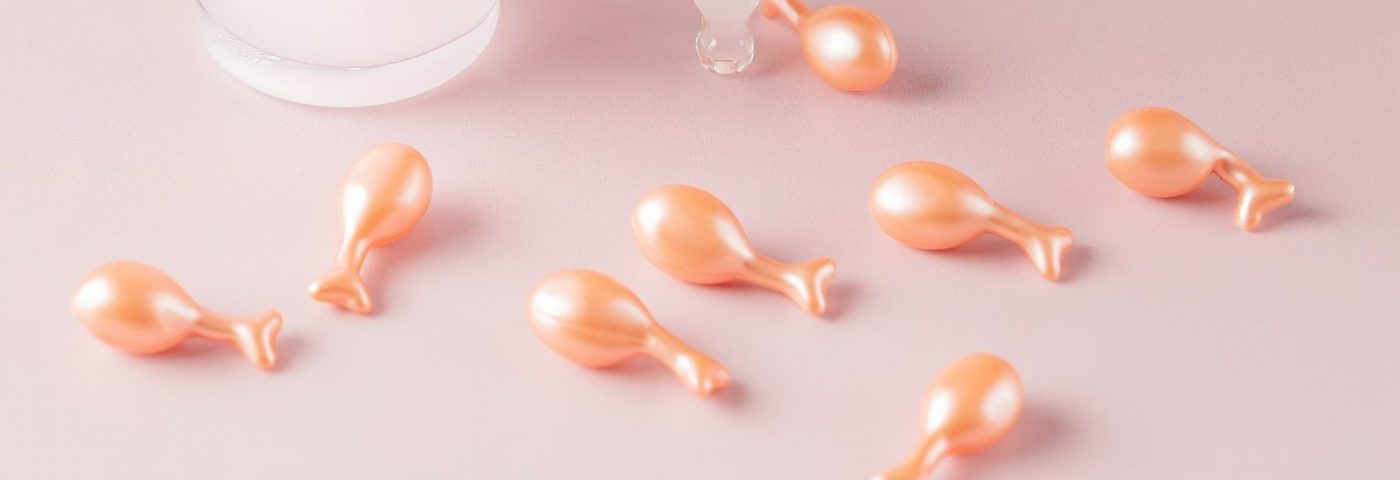By Karina Soeiro
Finding solutions that bring together innovation, sustainability, and practicality for the dermo-cosmetics market is vital for companies in this sector.
Combining these requirements with a solution that facilitates the overcoming of some pharmacy technical challenges, such as the oxidation and instability of some inputs, is a viable option through the development of a new cosmeceutical formulation – the skincare capsules.
Skincare capsules, contrary to what the name may suggest, are not nutraceuticals that work in synergy with topical products to promote skin health or beauty.
Skincare capsules are a new form of skincare cosmeceuticals that meet the growing demand for innovative products that are more sustainable, and eudermic and make the daily routine more practical.
The absence of water and preservatives in its formulation, the practicality when travelling and the possibility of refilling bring skincare capsules countless advantages for both the consumer and the formulator.
Allied to these benefits, the skincare capsules refer to the consumer’s desire to be an active part of their care routine and meet the “Do it yourself” mood practically and objectively: a jar of cosmetic capsules, a small Pasteur pipette of 0.5mL and mineral water is all the consumer needs to prepare their own cosmetic.
In order to add value to this concept, a skincare capsule holder (to carry a small amount in the handbag or even trips), a mini crucible to facilitate preparation, and the possibility of refilling the capsules, make a kit of eye-popping innovations whole.
The capsules used can be either conventional gelatine, or vegan options that are easy to disintegrate, such as Pululam capsules, made from the natural fermentation of cassava starch (tapioca). Gelatin capsules, in addition to being of animal origin, disintegrate slower in the presence of water when compared to the tapioca version (Tapiocaps™).
Plus, if they are used as skincare capsules, it is highly suggested that the capsule be discarded once opened, using only its content’s powder that will change into an emulsion in the presence of water, or, what is more practical, the use of the tapioca capsule that will disintegrate and be homogenised to its content in the presence of water with the aid of a spatula.
Another considerable advantage of using pullulan capsules is the formation of a tensor film that promotes an immediate lifting effect with a dry and velvety touch, much appreciated by consumers.
For the formulator, the possibility of an anhydrous formulation and extemporaneous use represents a great tool to deliver inputs that oxidize or undergo hydrolysis in the presence of water, providing stability to the formulation, allowing the use of unstable inputs that represent a pharmacy technical challenge as a classic example: the Ascorbic Acid.
In addition to stability, skincare capsules are practical, since they can be transported in unit doses on trips or in the handbag, taking up less space and preventing accidents such as breakage and product leakage in suitcases.
They are also formulations considered “milder” as they do not require the use of antimicrobial preservatives and antioxidants, such as sodium metabisulfite, which is known for its potential for skin sensitization in individuals with skin that is more predisposed to inflammatory reactions such as contact dermatitis caused by chemical agents.
The research and development of formulations in topical capsules must take into account the classes of important inputs to compose an emulsion formulation, such as humectants, emollients, consistency agents, emulsifiers in solid form (preferably in powder) and sensory modifiers as an excipient to fill the total volume of the capsules.
It is possible to include liquid ingredients in small amounts, especially oils, esters and non-polar active ingredients, taking into account the limitations of this pharmaco-cosmeceutical method, such as the choice of liquid polar ingredients, due to the fact that this formulation is dispensed in a capsule whose composition is a water-soluble polymer, and contact with polar liquids would inevitably initiate its disintegration.
The formulator must take into account the final volume of the formulation after reconstitution when calculating the amount of each ingredient, and the excipient must be calculated based on the volume of the chosen capsule and the density of the sum of the inputs, as in the example of the formulation below.
Skincare Capsule for skin ageing treatment
Ingredient / Concentration / Amount for producing 30 capsules
- Ascorbic Acid 20% (uncoated), 12g
- Relievene ® (Rhodiola Rosea Root Extract (and) Carnosine (and) Alanyl Glutamine) 0,3%, 0,6g
- N Acetyl D Glucosamine 5%, 3g
- Physavie ® (Physalis Angulata Extract (and) Caprylic/Capric Triglyceride) 0,2%, 0,12g
- Revinage® (Bidens Pilosa Extract (and) Elaeis Guineensis (Palm) Oil (and) Gossypium Herbaceum (Cotton) Seed Oil (and) Linum Usitatissimum (Linseed) Seed Oil )1%, 0,6g
- Cellfie® (Water (and) Propanediol (and) Lecithin (and) Glycerin (and) Thymus Vulgaris (Thyme) Flower/Leaf Extract) 2 %, 1,2g
- Fragrance 1%, 6g
- Lactose 2%, 1,2g
- Olive Oil Powder 2%, 1,2g
- Lecigel® (Sodium Acrylates Copolymer (and) Lecithin) 1,78%, 1,068g
- Makibeads 80 ® (Methyl Methacrylate Crosspolymer). q.s.p
Preparation procedure
- Weigh phase A in a mortar and grind with the aid of a pestle. Pass through sieve mesh 20 (approximately).
- Add phase B over phase A and homogenise.
- Add phase C over phase A+B and homogenise. Then add phase D, then to E and repeat the procedure.
- Add phase F geometrically (check the density and required amount of Makibeads 80® to fill number 0 Tapiocaps™ capsule).
- Proceed with encapsulation and fill in a cosmetic container.
Important note: These formulations were made and standardized in Tapiocaps™ number 0 (standardized with a theoretical volume of 0.68mL or 500mg), plus 1.5mL of water, totalling approximately 2mL after reconstitution, so the calculation of the inputs in percentage is done using a reference dose of 2 mL times the total number of capsules produced.
Enjoyed this article? Get more by subscribing to our newsletter!
Feeling inspired to see ingredients and trends in action?
Then why not visit one of the in-cosmetics events around the world?

